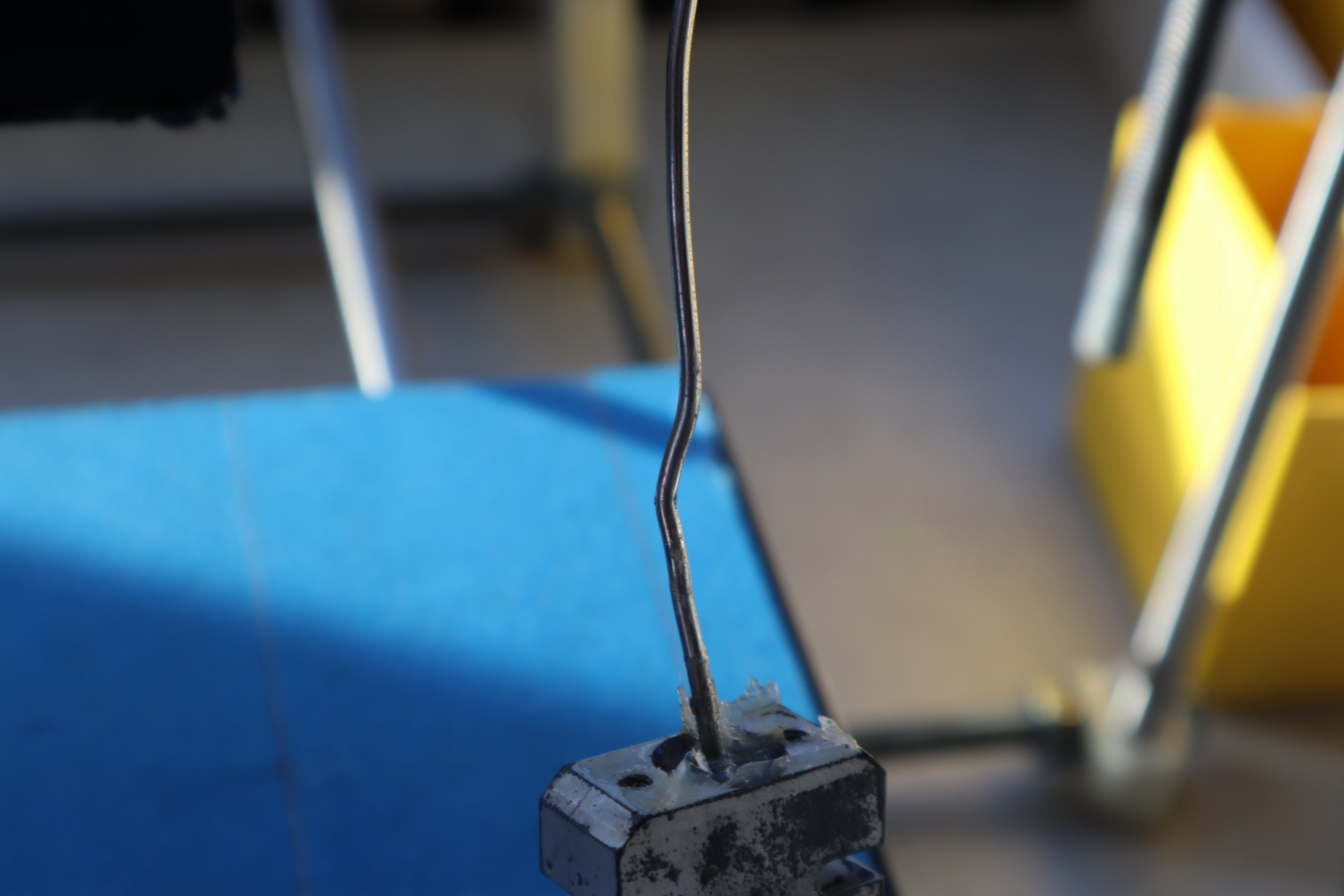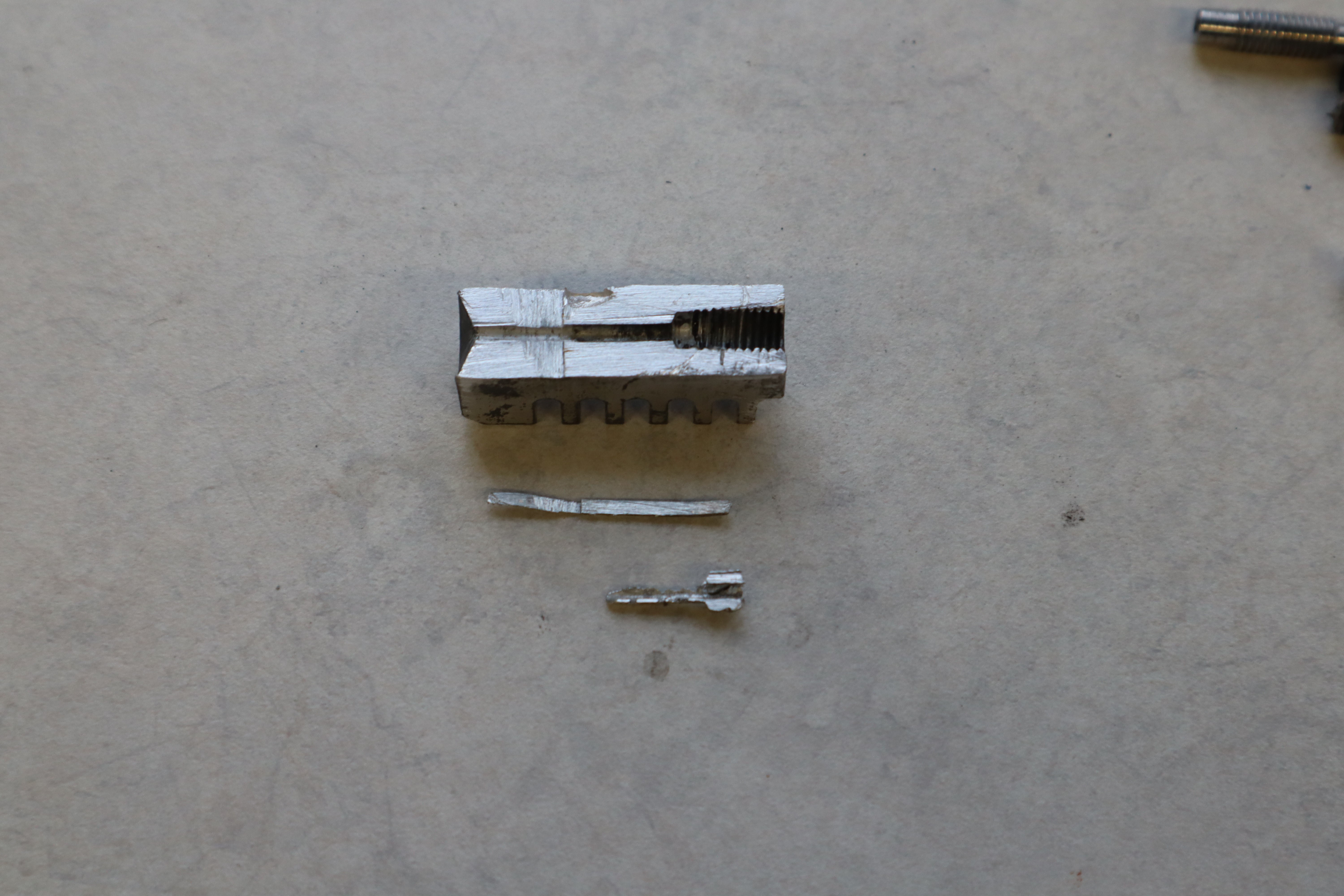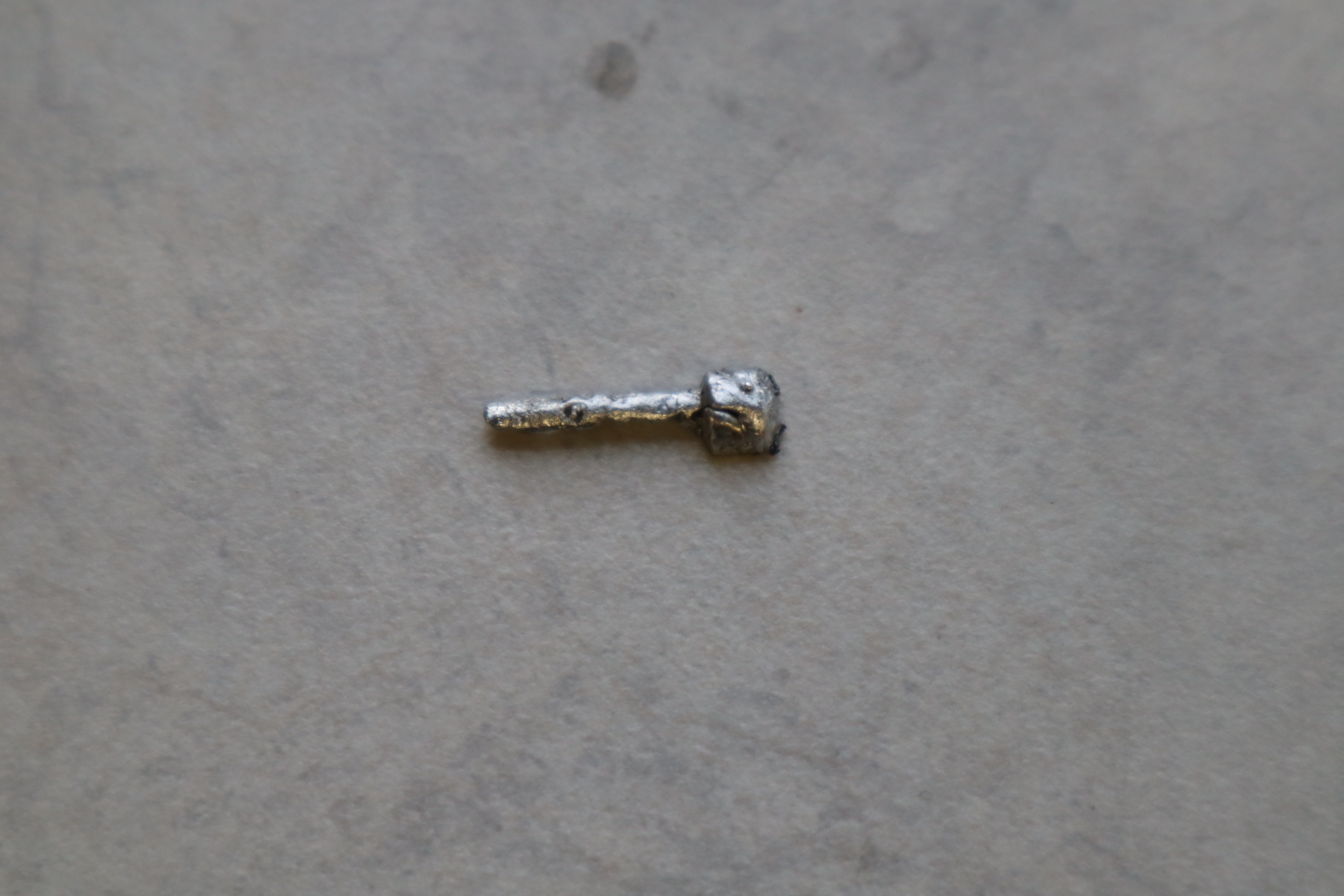During the last test the metal filament kinked and the extruder clogged. I initially thought it was just due to the bend in the wire, but while the system was hot, the wire could spin freely, although it wouldn't budge when pushed in or pulled out.

As soon as I noticed that the wire could spin freely I was pretty sure I knew what was going on, but I wanted to make sure, so I took apart the clogged extruder and sectioned the clogged cold end.

As I suspected, the nozzle and heatbreak performed just fine, wetting and not wetting where expected. The anodization on the aluminum heatsink also performed admirably: the interface between the feedstock alloy and the aluminum is very clear and there is no metalurgical bond between the aluminum and the tin-zinc alloy
Thankfully, just as I suspected, this was an easy thing to fix. Some metal flowed back up towards the cold end and solidified in a cylindrical cavity behind the back of the heat break. Then, because it was in the cold end, it could not melt again and flow through the nozzle. Some thermoplastic extruders encountered the same issue during their development in the RepRap project. It will just require some 3D modeling on my part and maybe some waiting for a few more components in the mail, but implementing the fix for this will be nothing new. But for those who are not familiar, I'll explain:

If you look at the heatbreak of most modern nozzles, they all have this extra unthreaded section in the cold end.

This design feature is key because when you want to tap threads into a hole that doesn't go all the way through the part, it's hard to get threads all the way to the back of the hole. Indeed as you can see above, the filled section doesn't really have threads. Bottoming taps can do a little better, but still aren't perfect. In practice, this means a fully threaded heatbreak can't thread all the way to the back of the hole, leaving a cylindrical cavity behind it. I thought my liquid glass would still be viscous enough to prevent metal from flowing back, but without a cooling fan on the heatsink, apparently the temperature gradient was not steep enough for that effect. Without active cooling, and with the cavity in a position where the feedstock alloy started getting melty, it's no surprise that this region quickly filled with liquid metal from further below, which subsequently froze and locked the wire in place.

The unthreaded section of E3Ds heatbreaks is made to fill up the unthreaded or poorly threaded space at the bottom of the hole and prevent that area from filling up with plastic. It even has a lip at the back of it which bites into the aluminum to seal it well. This leaves no cavity where plastic or metal could potentially get stuck, reducing the possible failure modes of the hotend. So all I need to do is implement the same idea on my extruder. Since I've destroyed my heatsink to demonstrate the failure mode, I think I'll cannibalize the E3D extruder I have, or get one shipped quickly via Amazon, since this E3D nozzle was an old one meant for 3mm filament and I have 1.75mm metal filament instead. I would need to anodize the aluminum and black oxide coat the stainless steel depending on the grade, or if I get one of the new titanium heatbreaks then I would anodize that as well. I'll probably need to redesign and reprint most of the extruder system as well.

And just to show that feedstock alloy has not welded onto the aluminum, we can remove it with no damage to the surrounding aluminum. What's especially fascinating about this is that the solidified melt around the filament actually detached cleanly from the filament wire. This demonstrates that it backflowed from further down in the extruder then solidified further up where it was cold. Indeed, the small finger of metal that shot up really far into the cold end may have been the thing actually jamming the nozzle, because further down I would have expected the metal in the cavity to at least be semisolid, which shouldn't have impeded the movement of the wire, tending instead to deform out of the way. Whatever the case may be, it would probably be better if that cylindrical area were filled so that the tube is fully constrained, and it will be better to have a steeper temperature gradient by putting a fan on the heatsink: this will keep the liquid glass highly viscous, preventing metal from shooting up into the cold end as far as it did here. Those two adjustments should fix this issue, just as they previously fixed it for plastic printing. My bad for not remembering that detail, but I suppose it's certainly worth it to go through some more obscure 3D printing history/engineering most people probably aren't aware of. I also wonder if I can pinch off the metal flow if I add a metal drawing die or similar constraint that the wire just narrowly fits through, but I think that may prove more finicky than just increasing the glass gasket viscosity, especially when the bondtech teeth bite into the metal filament: it would make the seal inconsistent. I'll keep that option on the table for later perhaps; maybe a silicone O-ring could suffice at low temperatures.

the smooth surface demonstrates that this material did not wet onto the aluminum threads, and in the previous image, the threads in the aluminum are clear as far back as the threads go; this means that the anodized coating on the aluminum worked as intended, because normally tin-zinc loves to weld to and dissolve aluminum.
Anyways I've got my work cut out for me, but at least for once I'm not inventing something entirely new to get around a problem few people have ever encountered before, and I've got a solid roadmap in front of me. I think by the middle of the month, I should be back to printing stuff, without the part where the extruder clogs.
 Michael Perrone
Michael Perrone
Discussions
Become a Hackaday.io Member
Create an account to leave a comment. Already have an account? Log In.